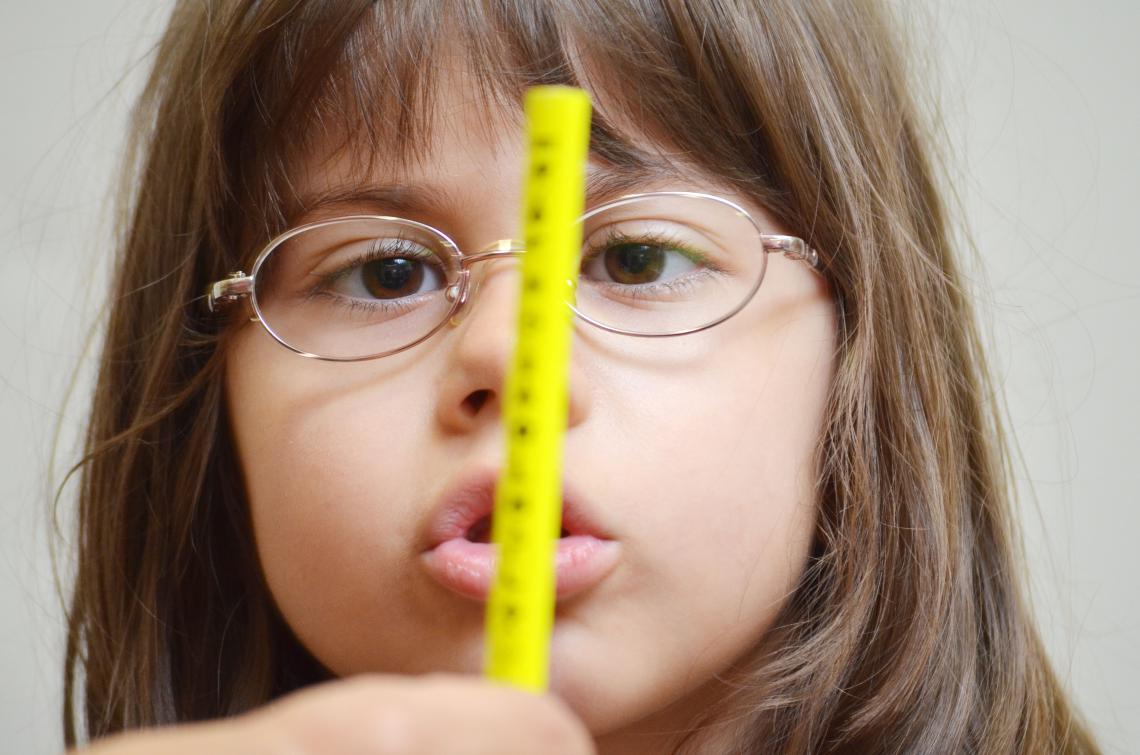What is Visual Fixation?
Fixation is the ability to aim the eyes to a particular spot accurately. Static fixation is the ability to focus on a stationary object when reading a word or working a math problem. Fixation occurs monocularly or binocularly. The goal of visual fixation is to then trigger the accommodative and vergence systems to identify what the object is, and where it is in space.

Saccadic Fixation
Saccadic fixation is the ability to move the eyes quickly and accurately across a page to read a line of print. When a person is reading a line of print, the eyes make "jumps" from one chunk of words to the next. This is why it is important to have accurate saccadic fixation.
Saccadic fixation dysfunction can cause a number of symptoms to the patient. Not being able to accurately and surely plant the eye or eyes in one particular place can make it very challenging to read. 80% of what we learn comes through the visual system, if any part of the visual system is not functioning at an operating standard then, learning becomes more difficult.
Pursuit Fixation
Pursuit fixation is the ability to follow a moving object with the eyes.
These complex operations require split-second timing for the brain to process the information received and to track the path of the moving object. Problems in these areas can impact someone's ability to read, drive a car, or participate in sports. An example of a pursuit is when a person is following a moving car with their eyes while also not moving their head.
People with visual fixation problems may be diagnosed with Oculomotor Dysfunction.
Examples of Vision Therapy procedures to work on Fixation
Saccadic Procedures
You may have seen a procedure where the patient is to look at four corners of a wall individually. This movement and fixation can help increase awareness of eye placement as well as increase the ability for that eye movement to be accurate. This is just one of many procedures that are used in an overall comprehensive vision therapy program.
When using the 4 corners procedure, the patient may place a small bean bag on their head to give them proprioceptive feedback, telling them that they are moving their head. The feedback comes from the bean bag either falling off or moving slightly on the patients head.
Pursuit Procedures
You may have seen a procedure where the patient is following a ball on a string with one or both eyes. This ball on a string is called the Marsden ball and is a classic tool used in a comprehensive vision therapy program. The Marsden ball creates a target that moves smoothly through the air that the patient can then use one or both eyes to track. Typically this is done with one eye at a time and then both eyes together. In both pursuits and saccades, the patient is encouraged to keep their head still. The patient may be asked to wear the small bean bag on their head during the Marsden ball procedure as well.
The Vision Wiki
- Binocular Vision
- Vision Tests
- Suppression Tests
- Worth 4 Dot
- Tests of Stereopsis
- Cover Test
- Definitions
- Signs and Symptoms
- Blurry Vision
- Reading Problems
- Eye Strain
- Driving Problems
- Headaches
- Suppression
- Double Vision
- Motion Sickness and Car Sickness
- Pias Vision
- Visual Skills
- Visual Tracking
- Visual Fixation
- Stereopsis
- Depth Perception
- Visual Accommodation
- Visual Requirements for Baseball
- Visual Requirements for Pilots
- Reading
- Foundational Reading Skills
- Vision and Learning
- Fusion
- Convergence and Divergence
- Reading Skills
- Visual Processing
- Eye Problems
- Physiology of Vision
- Lazy Eye
- Lazy Eye Treatments
- Reading
- Fields of Study
- Research
- Glaucoma
- Virtual Reality
- Organizations
